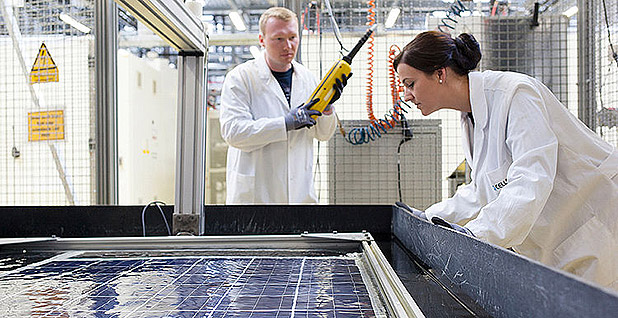It is hard to comprehend that we are around half way through summer. It sure doesn’t seem like it to me. It’s going by so quickly and for some reason I feel like I’m missing out. Maybe because of the weather? Too hot, too dry, too wet, too cool, too windy (meaning being unsuitable to kayak on Lake Michigan). But generally, here in northern Illinois we have it so much better than anyone west of the Mississippi. The drought, heat, fires, smoke, monsoons, power shortages or threats of them, dried up reservoirs and streams. It must seem like a nightmare (and it is one) and can’t be over soon enough. Remember, as I’ve been mentioning recently, it’s only going to get worse from here. What is happening now is doing so much faster than we have been warned it would. Unfortunately, the climate models are proving to be too accurate and on the more severe end of the array of outcomes that could occur. And thus, in years to come, we’re going to look back on this time as the “good old days” instead of how we do now as how bad it’s become and is becoming.
I will get to these climate and consequences headlines later. First I want to report on some good news.
As more and more places are feeling the direct impact of the warming climate right along the lines that we’ve been warned about and so many people are feeling the direct impact of what is occurring, the realization that we are facing a severe crisis is finally hitting home. We’ll look back on this time period and realize that we really HAVE hit the tipping point.
It is able to be seen in some interesting data. As we all know, follow the money. It has become obvious that we absolutely must stop emitting CO2 and methane and transition in the fastest way possible to a carbon free society. And the capital investments are unmistakably going in this direction.
As reported by the Wall Street Journal on May 22nd,
“After years of intermittent excitement followed by fizzled expectations, green finance is now looking less like the niche interest of socially conscious investors and more like a sustainable gold rush.”
“Some of the world’s biggest companies and deepest-pocketed investors are lining up trillions of dollars to finance a shift away from fossil fuels.
Assets in investment funds focused partly on the environment reached almost $2 trillion globally in the first quarter, more than tripling in three years. Investors are putting $3 billion a day into these funds. More than $5 billion worth of bonds and loans designed to fund green initiatives are now issued every day. The two biggest U.S. banks pledged $4 trillion in climate-oriented financing over the next decade.
“We’ve reached the tipping point and beyond,” said James Chapman, chief financial officer at Dominion Energy Inc., D 1.34% one of the country’s biggest utilities. Dominion, which has begun issuing green bonds, is planning to spend $26 billion or more on clean energy such as wind and solar in the next five years.
Green Capital
Money has been pouring into ESG investment funds focused on environmental, social and corporate-governance issues.
Cumulative stock fund flows by category Assets* held by EST Funds, quarterly
since start of 2019
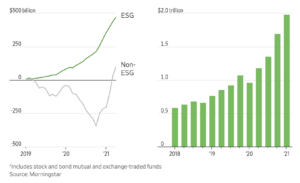
Behind the geyser of capital is a confluence of forces. Big money managers see opportunities for substantial profits, and they also worry about financial risks associated with climate change. Many of their clients—giant pension funds and fast-trading young investors alike—want to put their wallets behind projects that aim to curb environmental damage.”
Here’s the link to the full article.
https://www.wsj.com/articles/green-finance-goes-mainstream-lining-up-trillions-behind-global-energy-transition-11621656039
Does more need to be done? Sure. But the momentum is growing and in only one direction. There’s no turning back now. So you’d better take heed and get on board or you’ll be left behind in the dust.
Following are recent headlines. But remember, all that is occurring is connected. Worsening floods, fires, hurricanes, etc. is going to make being able to buy insurance for real estate more costly IF you can buy it at all. This will impact real estate values. Hotter water will impact nuclear power plants ability to continue functioning as will lower water levels in reservoirs and rivers put hydro power in jeopardy leading to the probability of power shortages. Hotter temperatures and drought are destroying food production and devastating sea life.
There is a lot going on that you may not see but is nonetheless wreaking havoc on our world RIGHT NOW.
I have decided to try and divide the headlines into categories. Some crossover is obvious but I’ve tried to put them into the one that I believe is most relevant.
Consequences:
Politico 7/16/2021
https://subscriber.politicopro.com/article/eenews/2021/07/16/drought-threatens-to-close-calif-hydropower-plant-for-first-time-180026
Drought Threatens to Close Calif. Hydropower Plant for First Time
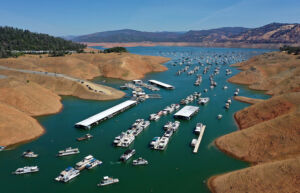
A California power plant likely will shut down for the first time ever because of low water during a prolonged drought, squeezing the state’s very tight electricity supplies, state officials said yesterday.
Politico 7/15/2021
https://subscriber.politicopro.com/article/eenews/2021/07/15/entire-calif-salmon-run-expected-to-die-as-drought-deepens-179977
Entire Salmon Run Expected to Die as Drought Deepens
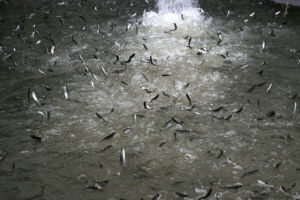
Virtually all young salmon in a historically prolific California run may die this year due to drought and rising water temperatures, state officials said yesterday.
Politico 7/15/2021
https://subscriber.politicopro.com/article/eenews/2021/07/15/pacific-nw-heat-wave-killed-over-1b-sea-creatures-research-179914
Pacific NW Heat Wave Killed Over 1B Sea Creatures — Research
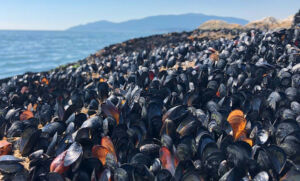
More than 1 billion sea creatures along the Vancouver coast were cooked to death during a record-breaking heat wave in the Pacific Northwest, according to preliminary data.
The maritime massacre surprised even the experts. Christopher Harley, a professor at the University of British Columbia, said the death toll kept climbing as his team investigated area beaches.
New York Times July 13, 2021
Click on Photo to read the full article
Drought Hits the Southwest, and New Mexico’s Canals Run Dry
“I never thought I’d witness such a crash in our water sources,” said Harold Trujillo, 71, a farmer in Ledoux who has seen his production of hay collapse to about 300 bales a year from 6,000. “I look at the mountains around us and ask: ‘Where’s the snow? Where are the rains?’”
Associated Press as reported in E&E News July 7, 2021
https://subscriber.politicopro.com/article/eenews/1063736587?utm_campaign=edition&utm_medium=email&utm_source=eenews%3Agreenwire
Wildlife, Air Quality at Risk as Great Salt Lake Nears Low
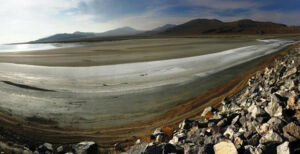
“A lot us have been talking about the lake as flatlining,” said Lynn de Freitas, executive director of Friends of Great Salt Lake…The lake’s levels are expected to hit a 170-year low this year.
The receding water is already affecting the nesting spot of pelicans that are among the millions of birds dependent on the lake. Sailboats have been hoisted out of the water to keep them from getting stuck in the mud. More dry lake bed getting exposed could send arsenic-laced dust into the air that millions breathe.
Politico as reported in E&E News July 6, 2021
https://subscriber.politicopro.com/article/eenews/1063736467?utm_campaign=edition&utm_medium=email&utm_source=eenews%3Aclimatewire
Nation Records Warmest-Ever June as Ski Fields Struggle
New Zealand has recorded its warmest June since record-keeping began, as ski fields struggle to open and experts predict shorter southern winters in the future.
A range of factors led to the record, including more winds coming from the milder north rather than the Antarctic south, and unusually high ocean temperatures, said Gregor Macara, a climate scientist at the government-owned National Institute of Water and Atmospheric Research.
Transportation
E&E News June 29, 2021
https://subscriber.politicopro.com/article/eenews/1063736015?utm_campaign=edition&utm_medium=email&utm_source=eenews%3Aenergywire
Honda Changing Course, Will Build its Own Electric Vehicles
In April, the company said it plans to phase out all of its gasoline-powered vehicles in North America by 2040, making it the latest major automaker with a goal of becoming carbon neutral. Honda wants 40% of North American vehicle sales to be battery or fuel-cell powered by 2030, and 80% of all vehicles sold to run on batteries or hydrogen by 2035.
E&E News July 14, 2021by Bloomberg News
https://subscriber.politicopro.com/article/eenews/2021/07/14/united-air-mesa-set-to-buy-up-to-200-small-electric-planes-172824
United Air, Mesa Set to Buy up to 200 Small Electric Planes
United Airlines Holdings Inc. and regional carrier Mesa Air Group Inc. each agreed to buy as many as 100 small electric-powered planes from a Swedish startup — if the aspiring manufacturer can develop the aircraft.
The U.S. airlines and Breakthrough Energy Ventures also will take an equity stake in Heart Aerospace, the companies said in a statement yesterday. The investment amounts to $35 million, Heart Chief Executive Officer Anders Forslund said in an interview before the announcement. The company is targeting a 2026 debut for its proposed 19-seater, the ES-19.
E&E News July 13, 2021
https://subscriber.politicopro.com/article/eenews/1063736667?utm_campaign=edition&utm_medium=email&utm_source=eenews%3Aenergywire
DOE Researchers Eye EV Breakthrough in the Lab — and Factory
First is forcing volatile lithium metal to behave, thus enabling new battery chemistries that promise to put an EV’s range and cost on a par with today’s gasoline-powered vehicles.
Substituting lithium metal instead of graphite, the anode battery pole used in today’s lithium-ion batteries, holds great promise toward delivering a high performance, lighter EV battery at lower cost. The goal gives the consortium its name — reaching 500 watt-hours of energy per kilogram of battery weight (Energywire, Oct. 16, 2019).
“Replacing graphite with lithium metal is probably the best solution,” Liu said in an interview with E&E News. “That’s our conclusion, and I think most of the community accepts that. It has the highest capacity among the known materials, so you only need to use a small amount.”
Finally, the Weather: And this is NOT NORMAL!!
The New York Times July 16, 2021
https://www.nytimes.com/2021/07/16/world/europe/germany-floods-images.html?algo=edimp_fye_news_impression_cut_1&block=4&campaign_id=142&emc=edit_fory_20210716&fellback=false&imp_id=141924382&instance_id=35579&nl=for-you&nlid=91958744&pool=pool%2Fa2fc9efa-4a9f-46ae-8506-967a38fc2099&rank=3®i_id=91958744&req_id=274220032&segment_id=63720&surface=for-you-email-news&user_id=8377d1f66a57cc2fd87a0167fa0f159b&variant=1_edimp_fye_news_impression_cut_1
Flooding in Europe, in Pictures
E&E News July 14, 2021
https://subscriber.politicopro.com/article/eenews/2021/07/14/in-hell-nowhere-has-been-drier-than-this-stretch-of-texas-166396
‘In Hell’: Nowhere Has Been Drier than this Stretch of Texas
“A recent analysis of D4 exceptional drought — the worst kind — shows that Wilbarger and Wichita counties experienced the hottest, driest conditions of the 2010-2019 decade — in all of the U.S. It was a period of remarkable drought elsewhere, too. There was crushing dryness in California and a 2019 “flash drought” that enveloped the Southeast and Ohio Valley (Climatewire, Oct. 4, 2019).
But none compared to the scorched Texas counties.”
E&E News July 2, 2021
https://subscriber.politicopro.com/article/eenews/1063736419?utm_campaign=edition&utm_medium=email&utm_source=eenews%3Agreenwire
Phoenix — yes, Phoenix — Records Hottest June Ever
It may be a dry heat, but Phoenix’s sizzling weather last month set a record for the hottest June in the city’s history.
National Weather Service meteorologists said the average temperature in Phoenix over the course of last month was 95.3 degrees Fahrenheit.
That topped the previous mark of 94.8 F set in 2013 and matched in 2016.
Last month also broke the record for warmest average low temperature for June at 82.5 F.
The average high temperature in Phoenix ranked as third highest on record at 108.2 F.
Science May 21, 2021
Death Valley Dethroned as World’s Hottest Place
A hunt for Earth’s hottest spot has ended in an improbable tie between two deserts hemmed in by heat-trapping mountains. Surface temperatures in the Lut Desert in Iran and the Sonoran Desert along the Mexican-U.S. border recently topped out at a sizzling 80.8°C (177F+), about 10° hotter than the previous high. Based on readings from NASA satellites, Lut hit its all-time high in 2018, a record the Sonoran matched the next summer, Yunxia Zhao of the University of California, Irvine, and colleagues reported on 10 May in the Bulletin of the American Meteorological Society. That’s bad news for desert creatures being pushed to the edge of their heat tolerances, says ecologist David Mildrexler of Eastern Oregon Legacy Lands. By tradition, meteorologists base official heat records only on ground thermometers that measure air temperatures in the shade, and so Earth’s official heat record, although disputed, remains a reading of 56.7°C (134) in California’s Death Valley in 1913.



